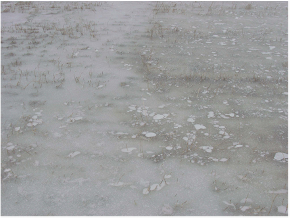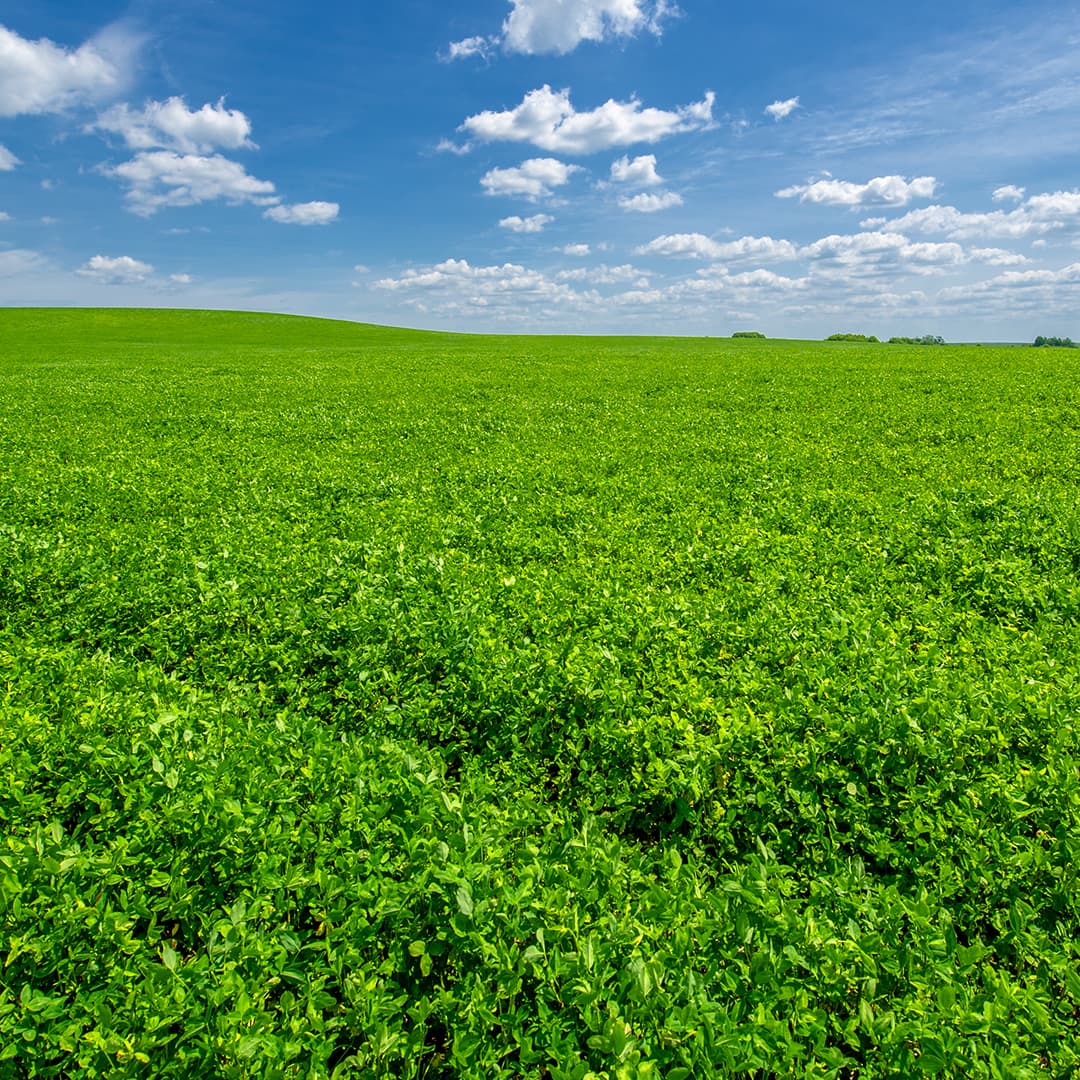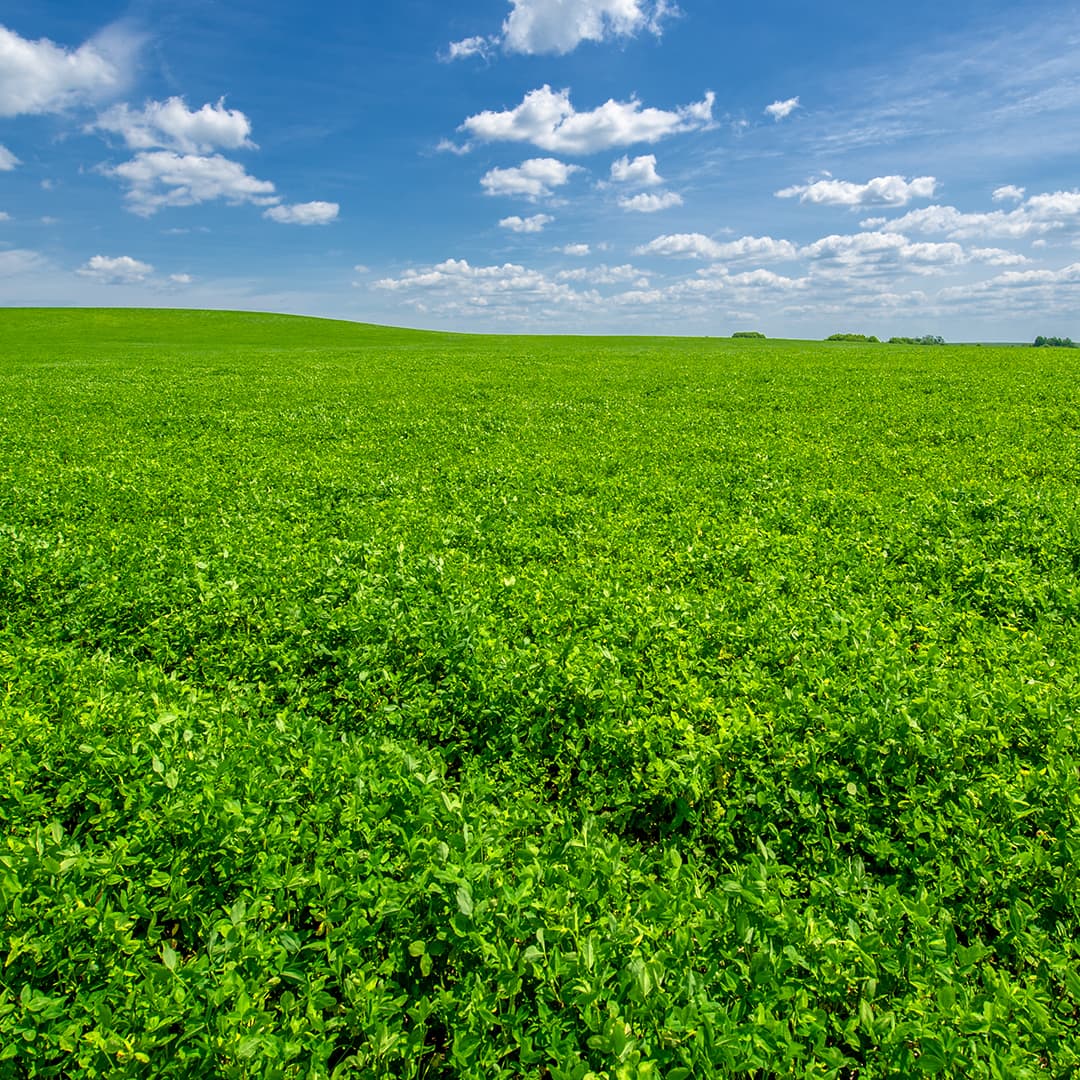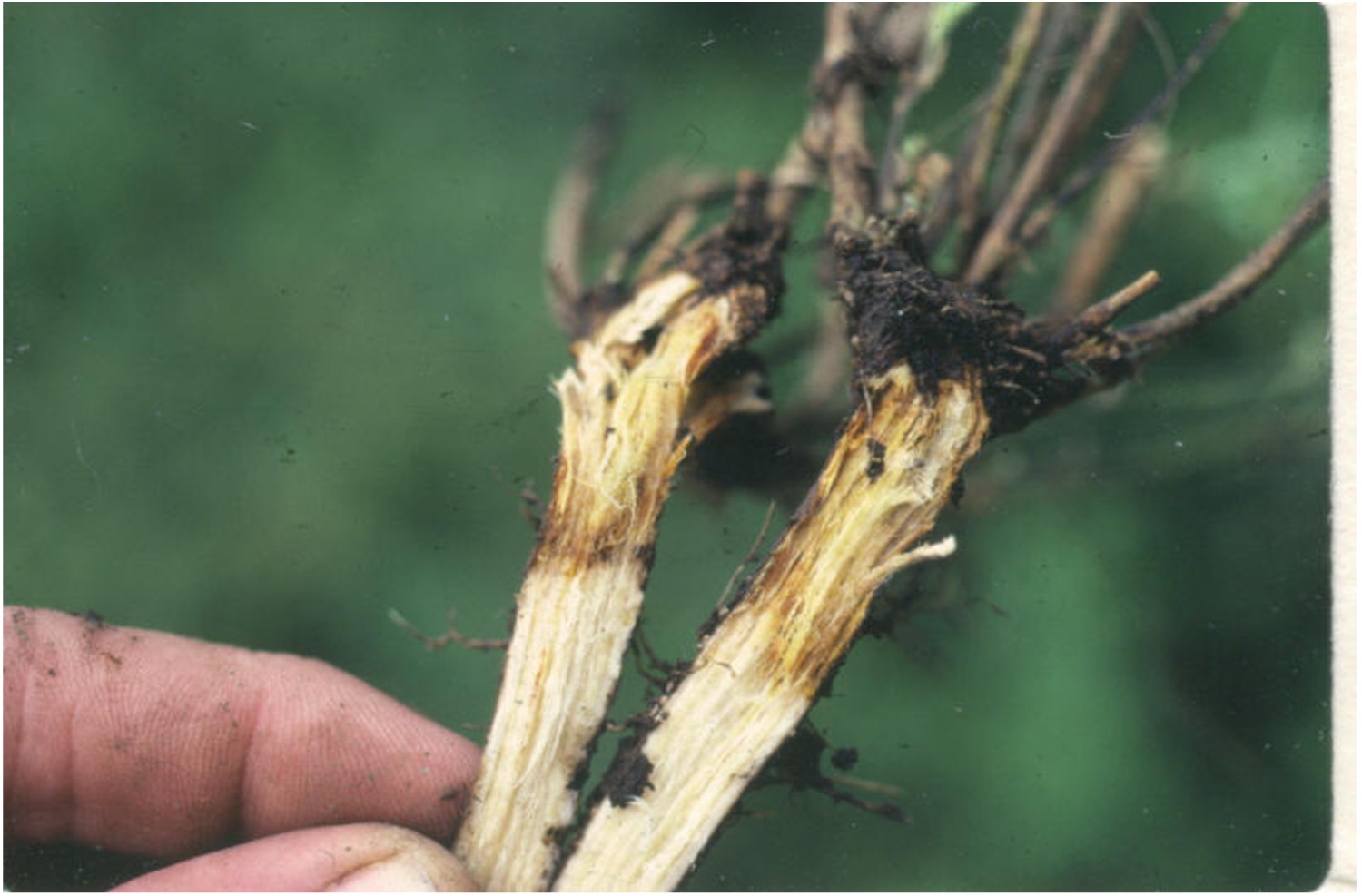Freezing rains and ice accumulation during the winter often lead to questions about potential damage to alfalfa stands. If you’re wondering how ice in your fields could be impacting your alfalfa stands, we’re here to answer your questions.
Ice primarily damages alfalfa because alfalfa roots require oxygen during the winter. This oxygen diffuses into the soil from air above ground. A solid layer of ice restricts air diffusion and suffocates the alfalfa. Lack of oxygen is a common reason for alfalfa loss in a field’s low spots. Alfalfa covered by ice for 3 to 4 weeks will likely suffer injury or death.
Other growers have applied fertilizer to ice with the idea that salts in the fertilizer will melt through the ice and create holes, allowing for air movement. However, those fertilizer particles often do not melt completely through the ice, making the application ineffective. Plus, subsequent rainfalls or even melting of the ice can lead to substantial runoff problems, particularly if the fertilizer contains nitrogen or phosphorus. Because of runoff issues, current nutrient management standards prohibit most nitrogen and phosphorus fertilizer applications on frozen or snow-covered soils, except when an application is made to winter grains. Even broadcast applications of potassium fertilizers on an ice cover are problematic. If runoff occurs, distribution of the fertilizer can be quite variable and off-site losses can lead to economic losses.
While growers may be concerned about ice on alfalfa, their best course of action is to wait and see how long the ice lasts and assess afterward what damage, if any, has occurred. Conventional wisdom says ice sheeting of less than 3 weeks will cause little to no damage, however, I have seen ice sheeting occur across central Wisconsin for at least 8 weeks with very little winterkill or injury.
For additional alfalfa management questions and tips, contact your alfalfa dealer.
How does ice cause damage to alfalfa?
The freezing temperatures of ice don’t typically cause much damage to alfalfa directly. To cause damage in alfalfa crowns, temperatures need to be significantly below freezing – less than 15 F when plants have hardened off well – 1 to 4 inches into the soil.Ice primarily damages alfalfa because alfalfa roots require oxygen during the winter. This oxygen diffuses into the soil from air above ground. A solid layer of ice restricts air diffusion and suffocates the alfalfa. Lack of oxygen is a common reason for alfalfa loss in a field’s low spots. Alfalfa covered by ice for 3 to 4 weeks will likely suffer injury or death.
How can I assess potential ice damage to my alfalfa?
If plants have been fertilized according to soil test recommendations, allowed to accumulate good root carbohydrate levels during the fall period and have hardened properly in the fall, cold injury due to ice is less likely. To determine whether or not ice sheets will cause suffocation damage to alfalfa stands, look at whether the ice is in a solid sheet. If the ice is non-uniform, cracked, or has holes, it will not completely restrict air movement into the soil and less damage will result. In addition, alfalfa stems sticking up through the ice will help create holes that will aid in the diffusion of oxygen.What can I do about ice on my alfalfa?
The short answer is nothing. Some growers have used a large tractor and disc in an attempt to break the ice. This technique generally will not break the ice unless there is a layer of snow in between the ice and ground. A tractor and disc heavy to break through inch thick on the ground, may damage the alfalfa.Other growers have applied fertilizer to ice with the idea that salts in the fertilizer will melt through the ice and create holes, allowing for air movement. However, those fertilizer particles often do not melt completely through the ice, making the application ineffective. Plus, subsequent rainfalls or even melting of the ice can lead to substantial runoff problems, particularly if the fertilizer contains nitrogen or phosphorus. Because of runoff issues, current nutrient management standards prohibit most nitrogen and phosphorus fertilizer applications on frozen or snow-covered soils, except when an application is made to winter grains. Even broadcast applications of potassium fertilizers on an ice cover are problematic. If runoff occurs, distribution of the fertilizer can be quite variable and off-site losses can lead to economic losses.
While growers may be concerned about ice on alfalfa, their best course of action is to wait and see how long the ice lasts and assess afterward what damage, if any, has occurred. Conventional wisdom says ice sheeting of less than 3 weeks will cause little to no damage, however, I have seen ice sheeting occur across central Wisconsin for at least 8 weeks with very little winterkill or injury.
For additional alfalfa management questions and tips, contact your alfalfa dealer.



